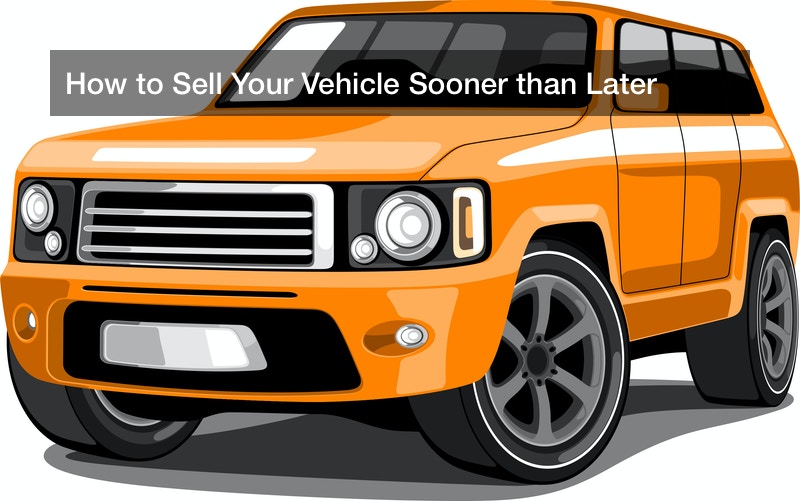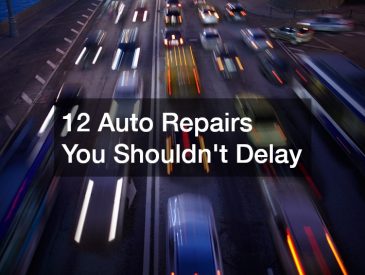
If you are looking into how to sell your vehicle quickly and turn your used car into cash, you may want to consider selling your vehicle through a private sale rather than trading it into a car dealership. A private sale maximizes the amount of cash you can receive for your used car. To make sure your private sale is quick and hassle-free, you will need to complete a few steps beforehand, such as setting a strategic asking price, gathering the required paperwork, advertising, and negotiating with potential buyers. Here is every step you should follow to sell your vehicle quickly.
Gathering the Documents
The first step in how to sell your vehicle is to gather the necessary paperwork. Before you even list your used car for sale, you should locate your vehicle title, which is also referred to as the pink slip. This is probably the most important document since it gives you the legal right to sell a vehicle you own. However, you should hold off on signing it for the time being. If applicable, you should also contact your lender to check if you still owe money on your car loans. If you do, you will have to speak with the lender to learn how to arrange a sale.
If you are looking into how to sell your vehicle, you need to find out what documents you need to transfer the ownership of your car. Go online to visit your state’s department of motor vehicles website. There you can find a variety of forms to be printed out, mainly a bill of sale. This is also a good time to find out your state’s policy regarding license plates, such as whether or not the plate stays on the vehicle after it is purchased. While collecting paperwork, it is also a good idea to order a vehicle history report, which many potential buyers will want to see. The vehicle history report will detail a number of factors, such as any accidents the vehicle has been involved in and the number of owners the vehicle has had.
Knowing the Market
Before you set an asking price, the next step in how to sell your vehicle is researching and knowing the market. You should begin to think about questions such as how easy your car will sell, if you will have to lower your starting price to make a sale, and whether or not your vehicle is viewed as a commodity on the automobile market. To help answer these questions, it is helpful to know that sports utility vehicles are generally in higher demand than sedans, and therefore usually come with higher price tags. Sedans, on the other hand, will usually be in demand by people who need a basic and affordable car.

The demand for sports cars and convertibles especially will increase and decrease with the seasons. Sunny and warm weather will increase the demand for convertibles while cold winter and fall weather will cause the demand to decrease. Vans and trucks that can be used for work transposition and in relatively high demand year-round. Oftentimes, their value is underestimated which results in them being undervalued and underpriced. Do some research on comparative make and models and then price accordingly. Since vintage or collector vehicles are much harder to sell, they can be more difficult to price. In this case, it is all about finding the right buyer. A vehicle that is garage kept will have a higher value when it comes time for resale. For a garage door installation, contact a local company.
The first step you can take to begin researching the market is to look up classified advertisements to get an idea of the asking price that others are setting for your vehicle or a comparable make or model. There are many databases that can be sorted by the make, model, and year that show you similar vehicles on the market. Pay attention to their mileage, condition, price, and location in which the vehicle is being sold. This will help you price your vehicle accordingly. Dealerships are not the best place to look for price comparisons since their prices will be much different than those for private sales. When setting an asking price, it can be helpful to have your vehicle appraised for private sale. There are many tools online that can do this for you for free. Just make sure whatever tool you are using has a private sale option.
When setting an asking price, try to leave some room for negotiation. Set the asking price at an amount higher than you actually expect to get. Keep in mind that buyers will likely try to negotiate in increments of five hundred dollars rather than hundreds. For example, if you want to actually get $10,000 for your vehicle, consider setting the asking price at $11,500. Therefore, if a potential buyer makes an offer below your asking price, it will be closer to the price you want rather than under it.
Improving Your Car’s Curb Appeal
One of the most important tips for how to sell your vehicle is to increase its curb appeal. When potential buyers are looking at your car, its appearance will heavily impact their first impression. Before you begin showing off your vehicle to customers, you should make sure you maximize its curb appeal. While curb appeal is generally a real estate term, it absolutely applies to cars as well. Actions you can take to increase your vehicle’s curb appeal include but are not limited to a thorough car cleaning. This includes taking it to the car wash as well as cleaning the interior. Be sure to remove all personal items from the inside of the car. If the paint is heavily scratched or dented, consider having it detailed. However, it is important to keep in mind that depending on how long it takes you to sell your car, the detailing may wear off by then.

A few other actions you can take to increase your car’s curb appeal include making low cost repairs, wiping brake dust off of the tires and treating them with a tire shine product, and wiping down the dashboard, mirrors, and windows inside and out. It is also a good idea to have all the vehicle’s maintenance records and vehicle history report easily accessible in the car, preferably in the glovebox, to show potential buyers. The appearance of your driveway may also make an impact on potential buyers. If necessary, contact driveway paving contractors. These tips for how to sell your vehicle will go a long way to help increase its curb appeal and attract potential buyers to your car.
Advertising Your Vehicle
After you have maximized your vehicle’s curb appeal, another tip for how to sell your vehicle is advertising. Online classified ads are commonly considered the best place to advertise used cars. This is due to their convenience and ability to reach a wide geographical area. There are many paid sites for posting classified ads, which cost about 50 dollars to post a fully featured listing. On the other hand, there are also many sites that allow classified ads to be posted for free, but you may have to deal with a massive influx of callers that you would not receive on a paid site. Considering the fact that, as of 2016, there are approximately 222 million people with driver’s licenses in the United States, there is quite a large market out there for used cars. Many car forums online also have a classified section where you can advertise your used car.
Other than classified ads, social media can be an effective place to advertise your used car for sale. Although, this will probably only get the word out to your immediate circle. There are also websites known as peer to peer sites which allow buyers and sellers to connect through a used car marketplace online. Each of these websites is slightly different and provides varying services, such as return policies, warranties, and car inspections, so investigate the website’s policies before using their services. Other than these online methods for advertising, the old fashioned method of placing a for sale sign in the window of the car is always an effective way to attract potential buyers.
When you are crafting your classified ad, be sure to include information such as the make, model, year, mileage, condition, color, and trim level of your vehicle, as well as your asking price.
Showing Your Car

The next step in how to sell your vehicle is to show off your car. When potential buyers see your ad and are interested in possibly purchasing the vehicle, they will likely contact you about seeing the vehicle and test driving it before making an offer. To have them test drive the vehicle, arrange to meet at a local shopping center or park if you are not comfortable having potential buyers come to your home. While you are showing the car to a potential buyer, this is a great time to show them the vehicle’s history report and vehicle maintenance records. This will go a long way towards putting any doubts they may have about the car’s performance or history to rest.
Negotiating the Best Price
After someone has looked at your car, test driven it, and are truly interested in purchasing your vehicle, they will likely make an offer. Oftentimes, their offer will be lower than your asking price in an attempt to negotiate on their part. If a potential buyer makes an offer lower than your asking price, do not act too eager to lower the price tag. Try to hold your ground by reassuring them that you have done a fair amount of research and have determined a reasonable price, while there is some room to negotiate.
An important tip for how to sell your vehicle is to think about your negotiating strategy and responses ahead of time to avoid getting flummoxed. A good rule of thumb is to not lower your price soon after you put your vehicle up for sale. Then later on, if you do not find any suitors who are willing to pay that price, you can consider being more flexible.
Finalizing the Sale
After you and the buyer have agreed on an amount, you will have to agree on a method of payment. Cash transactions are usually the best method of payment for private sales. However, if your vehicle is selling for more than $10,000 for example, the buyer may prefer to pay with a cashier’s check since they may not want to carry that much cash. In this case, just arrange to meet the buyer at their bank or hard money lender so you can witness the withdrawal or verify the cashier’s check.
If you still owe money on your vehicle and the bank is holding the title, it is easiest to conduct the sale at the bank that holds the title. Therefore, after the money has been transferred and the bank has received the remaining balance on the loan, you can sign the title over to the buyer right away. After the sale is complete, it is crucial to avoid liability. The laws that govern liability regarding motor vehicles and auto insurance carriers vary state by state.
Check your state’s department of motor vehicles website to find the most up to date information. In addition, remember to cancel your automotive insurance plan or transfer it to your new vehicle.
After the Sale
Once the sale is complete, make sure to sign over the title to the buyer and take note of the odometer reading. In many states, you can download a release of liability form on your state’s department of motor vehicles website. This document verifies the time your vehicle left your ownership. If you need insurance on your new vehicle, contact your agent for a car insurance quote.

In just about every state, a warranty is not implied or provided in the private sale of a used car. Therefore, if something happens with the car after you have sold it, such as an accident, you cannot be held responsible in any way. In the case of an accident, contact car accident lawyers. This is why an important tip for how to sell your vehicle is to be completely transparent about the condition of the vehicle before the sale and on any department of motor vehicle paperwork after the sale. If you follow these tips on how to sell your vehicle, you will increase your chances of conducting a successful sale and turning your used car into cash.




